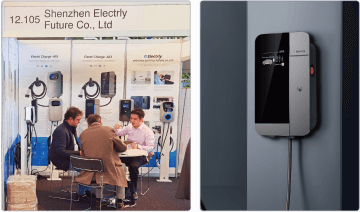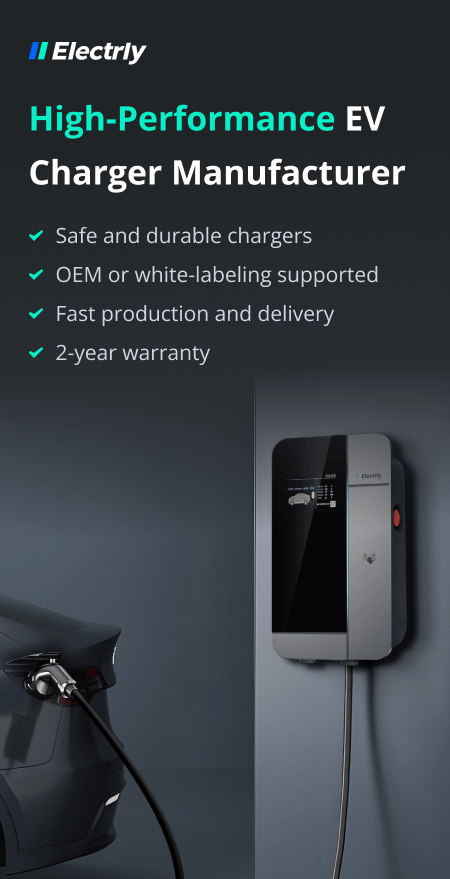Electric vehicles are not only transforming the way we think about transportation but also how we use and store energy. Bidirectional charging, also known as two-way charging, is an innovative technology that allows electric vehicle batteries to not only draw power from the grid but also send energy back to it or other devices.
In this article from Electrly, we'll delve into the intricacies of bidirectional charging, its relationship with smart charging, different types of two-way charging, and how you can benefit from this innovative feature on your EV. Moreover, we'll take a glimpse into the future of bidirectional EV charging and answer some of the frequently asked questions about the technology.
What Is The Process of Bidirectional Charging? How Does It Work?
What is Bidirectional Charging?
Bidirectional charging, also referred to as two-way charging, is a cutting-edge technology that enables electric vehicle batteries to both receive and deliver energy to and from an external power source.
This marks a significant improvement over the conventional charging process, where EVs can only receive energy from an external power source. By allowing for more versatile and efficient use of EV batteries, bidirectional charging has the potential to provide significant advantages for both EV owners and the energy grid.
How Does Bidirectional Charging Work?
Bidirectional charging works by using a specialized charging system that enables energy to flow in both directions between an EV battery and an external power source. When the EV battery is connected to the external power source, it can either charge the battery or discharge the battery and send energy back to the power source. This process is typically controlled by specialized software that manages the energy flow and ensures that the battery is not overcharged or discharged beyond safe limits.
What's The Relationship Between Bidirectional Charging and Smart Charging?
Smart charging refers to a charging system where the charging time and rate of an electric vehicle can be controlled by a "smart" device. This is typically done through data connections between the EV and the charger, allowing for more efficient use of energy based on demand and cost.
While smart charging and bidirectional charging share some similarities, they serve different purposes and offer different benefits for EV owners and the energy grid. With smart charging, EVs can be plugged in but they don't have to charge the entire time. This can result in economic benefits for customers and help avoid overloading the energy supply grid.
In contrast, bidirectional charging enables an EV battery to both receive and deliver energy to and from an external power source, making it a more flexible and efficient use of the battery.
Different Types of Two-Way Charging
Bidirectional charging can be broken down into different types, each with its own unique mechanism and purpose. These types of charging include Vehicle-to-Grid (V2G), Vehicle-to-Home (V2H), Vehicle-to-Load (V2L), and Vehicle-to-Vehicle (V2V) charging. Each type of bidirectional charging offers unique benefits and can help to make EVs even more versatile and efficient.
V2G: Vehicle to Grid

Vehicle-to-Grid charging allows energy to flow in both directions between an electric vehicle and the power grid. This means that an EV can not only be charged using the grid, but it can also send energy back to the grid during high-demand periods, providing a valuable service to the energy system. This can help to reduce peak demand on the grid and provide additional revenue streams for EV owners.
V2H: Vehicle to Home

Vehicle-to-Home charging enables an EV to be used as a backup power source for a home during a power outage. This type of charging allows an EV to discharge energy back into the household circuit, powering lights, and appliances. V2H charging can also be used to shift energy demand away from peak rate periods, reducing energy bills for homeowners.
V2L: Vehicle to Load

Vehicle-to-Load charging allows an EV to be used as a portable power source powering devices like laptops, speakers, or other electrical devices during camping or fieldwork. V2L charging is becoming increasingly common, as more and more EVs are equipped with bidirectional charging capabilities.
V2V: Vehicle to Vehicle

Vehicle-to-Vehicle charging is a special application of V2L charging, allowing energy to be passed from one EV to another through a dedicated V2V connector. This is a valuable way to deal with the problem of range anxiety, as it allows EV owners to share energy between vehicles when needed.
How Can I Benefit From The Bidirectional Charging Feature On My EV?
Electric vehicles equipped with bidirectional charging capabilities can offer significant benefits to both drivers and businesses. As mentioned, there are different types of bidirectional charging, and they all have different benefits.
Make money by selling electricity back to the grid (V2G)
With vehicle-to-grid (V2G) technology, EV owners can sell excess energy back to the grid and receive feed-in tariffs. This system allows EV owners to earn money by helping to maintain grid reliability and stability. However, it's important to note that not all states in the US offer such a policy, so it's important to check local regulations and policies.
Reduce Energy Costs (V2H)
Bidirectional charging can help EV owners reduce energy costs by turning their cars into an efficient power source for their homes or businesses. Using smart-charging technology and bidirectional charging, owners can also let them charge their EVs at home during off-peak hours or when renewable sources are available, then use that energy to power their home during the day.
Emergency Power Source During Blackouts (V2H)
V2H charging also provides a reliable backup power source during blackouts or other power outages. The typical electric car battery holds about 60 kilowatt-hours of electricity, enough to power a home for roughly two days. This feature can be especially valuable for homeowners and businesses in areas that experience frequent power outages.
Portable Energy Source (V2L, V2V)
Another benefit of bidirectional charging is the ability to use EV batteries as a portable energy source for camping, construction appliances, and other devices. With vehicle-to-load (V2L) and vehicle-to-vehicle (V2V) charging, EV owners can use their car batteries to power various devices on the go or even provide energy to another EV in need.
The Future of Electric Vehicle Bidirectional Charging
As battery technology continues to evolve, we can expect faster charging speeds and larger battery packs in future electric vehicles. This, in turn, will enable more efficient and reliable bidirectional charging, making it an even more practical and accessible feature for consumers.
With an increasing focus on renewable energy sources, bidirectional charging will become a critical tool for managing energy surpluses and deficits. In the future, we can also expect more EVs to come equipped with bidirectional charging systems, allowing them to serve as mobile power banks for homes and other purposes.
As manufacturers continue to invest in bidirectional charging technology and integrate vehicle-to-everything (V2X) capabilities, the coming revolution in how EV owners utilize their vehicles assures.
Bidirectional charging will not only offer cost savings and energy independence, but it will also make electric vehicles more integrated into our daily lives, just as our phones have become over the past 20 years.
FAQs
1. Does my Tesla support bidirectional charging?
As of now, Tesla's electric vehicles do not support bidirectional charging, meaning the energy can only flow in one direction from the charger to the vehicle. However, Tesla has confirmed that it plans to add bidirectional charging functionality to all of its vehicles by 2025.
2. Will two-way charging affect the battery life of my electric vehicle?
There is conflicting research on the impact of V2G on batteries. The University of Hawaii found that unmanaged charge and discharge patterns can result in a loss of battery capacity, with V2G use twice a day potentially causing a 75% capacity reduction over 5 years. On the other hand, the University of Warwick found that managed use of V2G could control battery degradation.
In short, the bi-directional charging process shares no difference with driving your EV, which essentially are both battery discharges. You should expect battery degradation if you use bi-directional charging frequently, but with light uses, it should not be a big issue to worry about.
3. Do I need to install special equipment for bidirectional charging?
For V2H and V2G bidirectional charging, a dedicated bidirectional charging unit is needed. The charger is designed to convert the DC power from the EV battery back to AC power, which can be used to power a home or send electricity back to the grid.
Furthermore, V2L charging will require dedicated adapters with regular outlets to connect the integrated inverter in the EV to send converted AC power to home appliances and devices.


